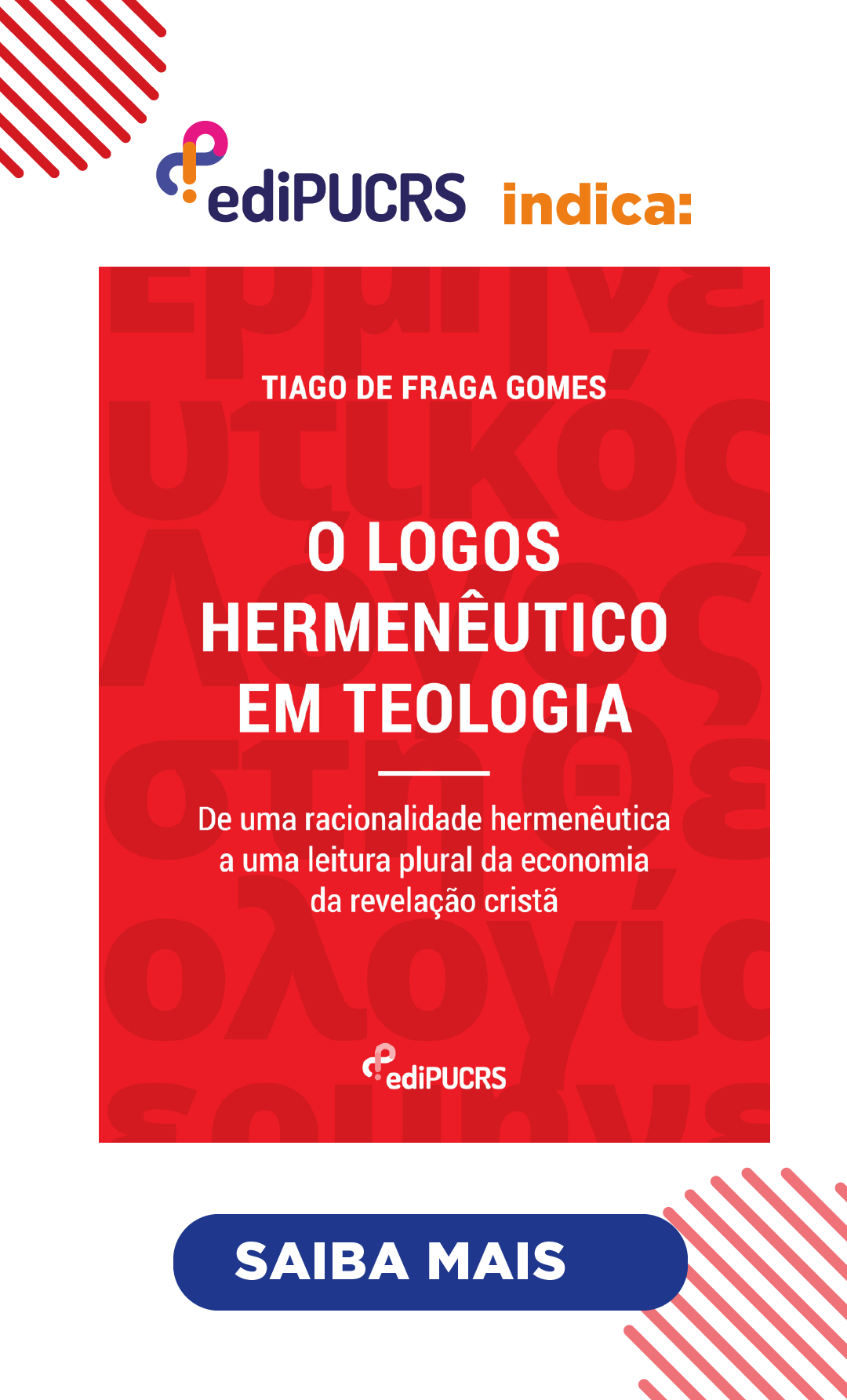Freedom according to hope
Imagination and eschatology from Paul Ricoeur and Jacques Lacan
DOI:
https://doi.org/10.15448/0103-314X.2023.1.43826Keywords:
hope, kerygma, metaphor, poetics, freedomAbstract
It is in the light of a kerygmatic axis of hope and freedom that Ricoeur seeks an approximation of “maturity” between philosophy and theology. The kerygma works as a passport to a new intelligence. Hope is a kind of “decentering”, between metaphor and parables, on the one hand, and the extravagance of things narrated and Kingdom, on the other. In The self in the mirror of the Scriptures (present in Amour et justice) Ricoeur affirms something fundamental from this relationship. If the function of the symbol in Ricoeur is to configure the space of meaning, the symbol in Lacan is detached from any question of meaning. Its function, he says, is even “to mean nothing”. A close confrontation between Lacan and Ricoeur around these three themes – the symbolic, the real and the imaginary – is useful to describe the possible obstacles of representation in relation to the interpretation of eschatological claims, for imagination in Ricoeur has fundamentally to do with the creative (poetic-metaphorical) power of language, while imagination in Lacan refers to an eff ect of alienation in the image that, precisely, hinders the creativity of subjective life.
Downloads
References
BARTHES, Roland. Análise estrutural da narrativa. Sobre atos X-XI. In: BARTHES, Roland. Exegesis e hermenêutica. Paris: Le Seuil, 1971, p. 181-204.
BARTHES, Roland. Introdução à Análise Estrutural das Narrativas. In: Comunicações 8. 1966. p. 1-27.
BULTMANN, Rudolf. Novo Testamento e mitologia. Com um texto inédito de Ricoeur. Genebra: Labor and Fides, 2013.
EDELSON, Marshall. Linguagem e Interpretação na Psicanálise. Chicago: Chicago University Press, 1984.
FREUD, Sigmund. A Interpretação do Sonhos (1899- 1900). In: FREUD, Sigmund Obras completas: psicanálise IV. Paris: PUF, 2004. p. 319-559.
FREUD, Sigmund; BREUER, Joseph. Estudos sobre histeria (1895). Paris: PUF, 1956.
HESTER, Marcus B. O significado da metáfora poética. Haia: Ovelhas, 1967.
LACAN, Jacques. Complexos Familiares na Formação do Indivíduo (1938). In: LACAN, Jacques. Outros escritos, Paris: Seuil, 2001. p. 23-83.
LACAN, Jacques. Função e Campo de Fala e Linguagem na Psicanálise. Relatório do Congresso de Roma, em Psicanálise 1, 1953, p. 81-166. In: LACAN, Jacques. Escrito I (1966). Paris: Seuil, 1999. p. 235-321.
LACAN, Jacques. Mirror Stage as Trainer of the Function of the I (1949). In: LACAN, Jacques. Escrito. Paris: Seuil, 1966, p. 93-100.
LACAN, Jacques. Seminário I. Escritos técnicos de Freud (1953-1954). Paris: Seuil, 1975.
LACAN, Jacques. Seminário II. O eu na teoria de Freud e na técnica psicanalítica (1954-1955). Paris: Seuil, 1978.
LACAN, Jacques. Seminário III. Psicoses (1955-1956). Paris, Seuil, 1981.
LEVI-STRAUSS, Claude. A análise morfológica dos contos russos. Revista Internacional de Linguitic e Poética Eslavas, [S. l.], 1960/3, p. 122-149.
LEVI-STRAUSS, Claude. O estudo estrutural do mito. Antropologia Estrutural, Nova Iorque, Doubleday, p. 202-228, 1967.
MARINHA, Louis. Análise Estrutural de uma Narrativa de Parábola: Mateus 13. In: CHABROL, C.; MARIN, L. (ed.). Semiotic narrativa: narrativas bíblicas. Paris: Didier- Larousse, 1971. p. 1-23.
MARINHA, Louis. Mulheres na tumba. Análise estrutural de um texto evangélico. In: CHABROL, C.; MARIN, L. (ed.). Semiotic narrativa: narrativas bíblicas. Paris: Didier-Larousse, 1971. p. 39-50.
RICOEUR, Paul. Desmiostologização e Hermenêutica. In: BULTMANN, Rudolf. Novo Testamento e mitologia. Genebra: Labor and Fides, 2013.
RICOEUR, Paul. Imagem e Linguagem. In: RICOEUR, Paul. Escritos e palestras 1. Em torno da psicanálise, Paris, Seuil, 2008.
RICOEUR, Paul. Imagem e linguagem. In: RICOEUR, Paul. Psicanálise e Linguagem. New Haven-London: Yale University Press, 1978. p. 293-324.
RICOEUR, Paul. La mémoire, l´histoire, l´oubli. Paris: Seuil, 2000a.
RICOEUR, Paul. La Vie chrétienne. Journal de l´Église presbytérienne au Canada, [S. l.], n. 41, p. 4-6, 1992.
RICOEUR, Paul. Le conflit des interprétations: essais d´herméneutique I. Paris: Editions du Seuil, 1969.
RICOEUR, Paul. L´herméneutique biblique. Paris: Les Éditions du Cerf, 2000b.
RICOEUR, Paul. O Si-Mesmo como um Outro. Campinas: Papirus, 1991.
RICOEUR, Paul. Psychanalysis and Art. In: RICOEUR, Paul. Escritos e palestras 1: em torno da psicanálise. Paris, Seuil, 2008. p. 221-256.
RICOEUR, Paul. Soi-même comme un autre. Paris: Seuil, 1990.
Downloads
Published
Issue
Section
License
Copyright (c) 2023 Teocomunicação

This work is licensed under a Creative Commons Attribution 4.0 International License.
Copyright
The submission of originals to Teocomunicação implies the transfer by the authors of the right for publication. Authors retain copyright and grant the journal right of first publication. If the authors wish to include the same data into another publication, they must cite Teocomunicação as the site of original publication.
Creative Commons License
Except where otherwise specified, material published in this journal is licensed under a Creative Commons Attribution 4.0 International license, which allows unrestricted use, distribution and reproduction in any medium, provided the original publication is correctly cited.





